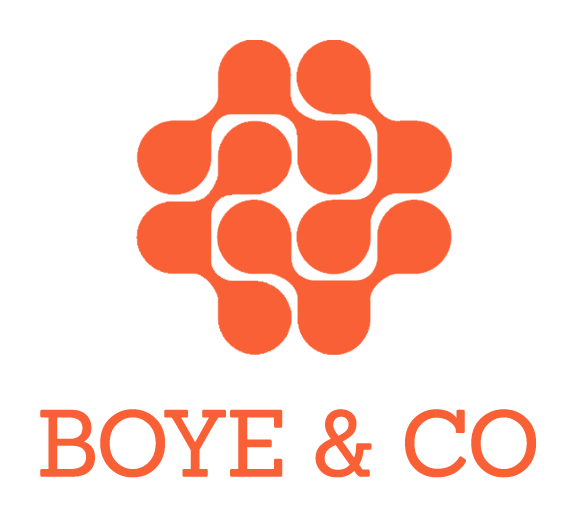By Janus Boye
Most content management systems fill authors with dread starting at the login screen. That's because the needs of authors are rarely taken into consideration in CMS projects. When content systems offer a terrible authoring experience, people avoid using them. That means they can't communicate effectively with their customers. The result is stale, hard-to-read content that doesn't align with an organization's goals.
Designing Content Authoring Experiences is a new book just out written by content strategist Greg Dunlap. Greg currently works as director of content strategy at Bixal, an agency focused on federal government projects.
Designing Content Authoring Experiences by Greg Dunlap - a call to view content authors as users of the website, much like the site visitors themselves.
The new book is a book for the designers, strategists, and developers who build and maintain content management systems and as a community it’s a book we’ve been waiting for and also happy to support the Kickstarter campaign that raised USD $12,465 to make it happen.
With practical examples and best practices, the book will show you how to create content management systems that support authors, so that authors can better serve their audiences. the book argues that authors are users that a content management system needs to serve.
In a recent members’ call, we celebrated the arrival of the book and did an informal Q&A with Greg. Let’s dive into the reason behind the book.
Almost everyone hates their content management system
The introduction of the book opens with this memorable quote by Deane Barker:
“In my experience, the number one complaint of organizations looking to replace their CMS is, simply, ‘our editors hate it.”
Greg Dunlap just published his new book Designing Content Authoring Experiences and in a recent members’ call we heard much more about it
This is from Deane’s 2019 book Real World Content Modeling, which we also held a members’ call on, see Happy editors make better content. As Greg eloquently writes in the opening, people aren’t really complaining about their CMS. Instead they are complaining about:
custom functionality that doesn’t fit with the way they work
opaque business requirements sent down from on high with no explanation or consideration for the people who enter content into the system.
feeling disenfranchised from the system they’re expected to use daily.
Or, as you probably already know if you are reading these lines and have been a part of either a CMS product development team or a CMS selection effort: The needs of authors are barely taken into consideration.
Spoiler alert: There is no definitive best authoring experience. This is a “what” and “why” book, not a “how to” book.
Let’s dive into the actual book.
If you’re a content professional, grab a highlighter
Matt Garrepy is Chief Critic at CMS Critic and he offered this testimonial:
“Designing Content Authoring Experiences is the modern Bible for content authors. From its opening page, Greg dives deep into the challenges and limitations of content management systems and prescribes actionable strategies for redressing the authoring experience. His thoughtful analysis of governance and deep dive into industry-specific personas is illuminating. He shines a much-needed light on the fundamentals of structured content through an organizational lens and provides insightful guidance on everything from prototyping to the impact of cognitive load on forms. It’s a quick but poignant read, and the lessons are sure to be long-lasting. If you’re a content professional, grab a highlighter – this is one physical book you’ll want to keep coming back to.”
The book is a quick read with 150 pages and nine chapters focusing on various aspects of authoring experience, including understanding user needs, balancing structure and flexibility, improving content entry forms, and providing ongoing support for authors after a product launch. The final chapter is on accessibility. More on that chapter shortly
Greg doesn’t talk about any specific CMS, but rather he focuses on the basic level straightforward stuff that can make authors lives easier. The book is intended for those working at the grassroots level of content management, distinguishing it from discussions that primarily address enterprise solutions and the book offers practical insights for organisations struggling with basic content operations, such as converting PDFs to web pages and encouraging subject matter experts to write in plain language.
Greg’s big hope is that the book will encourage teams to view content authors as users of the website, much like the site visitors themselves.
Importance of accessibility in the authoring experience
As a part of the members’ call, we dived into the 10 page long accessibility chapter. As Greg pointed out, there’s actually a whole set of Web Content Accessibility Guidelines focused on the authoring experience separate from the more widely known frontend experience guidelines. In other words: You need a dual approach to accessibility to cater to both the internal and external users.
Accessibility in the authoring experience was a major theme in the W3C selection process for a new CMS. Read more: What can we learn from the W3C CMS selection process
A second set of standards, called the Authoring Tool Accessibility Guidelines (ATAG), defines compliance for tools that do things such as:
Convert content, such as documents, into web formats
Produce web content
Create multimedia, such as photos and videos
Manage the design and layout of web pages
A screenshot from the chapter on accessibility in the book showing how accessibility checkers built into the authoring experience can help editors ensure compliance with accessibility standards
Accessibility plays a crucial role in the authoring experience, and key considerations include ensuring the authoring tools are keyboard navigable and support the creation of accessible content, such as options for adding alt tags and proper heading structures. Also, keep in mind how you manage drag-and-drop interfaces to ensure they are usable via keyboard.
Learn more about content authoring experiences
Here’s a few more posts on the topic:
The early days of web content authoring with Steven Pemberton from June 2025, which dives further into the early days of the editor experience for the Web
Content Production: The Next Wave for Digital Experience Platforms, which I wrote and had published on CMS Critic back in November 2023.
Empowering editors to design their best content with Emma Horrell from University of Edinburgh, also from late 2023.
Designing Content Authoring Experiences That Editors Don’t Hate by Greg from September 2023.
The First 85%, a post by Deane Barker from 2006 (!) on how no one actually opens a content management system and tries to enter any content until about 85% along in the entire process.
You can meet Greg in person at the CMS Connect 25 conference in Montreal in August. The conversation on content authoring experiences naturally also continues in our peer groups in Europe and North America.
As a modern author, Greg has created a website for the book, where you can find much more on the topic and naturally also order your very own copy. Check out: authoringexperience.com
There were no slides in the call, but you can lean back and enjoy the unedited recording below.



